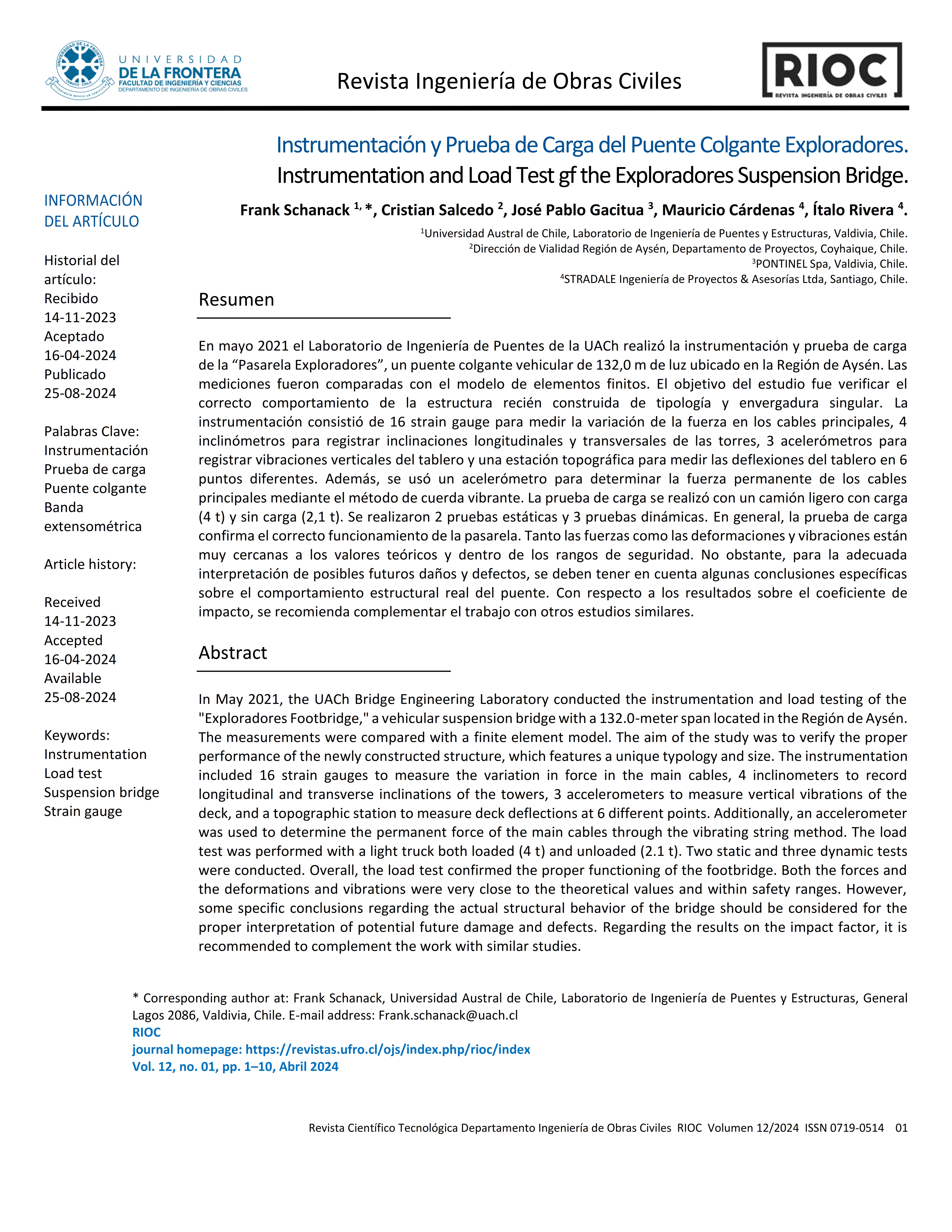Instrumentation and Load Test gf the Exploradores Suspension Bridge
Keywords:
Instrumentation, Load test, Suspension bridge, Strain gaugeAbstract
In May 2021, the UACh Bridge Engineering Laboratory conducted the instrumentation and load testing of the "Exploradores Footbridge," a vehicular suspension bridge with a 132.0-meter span located in the Región de Aysén. The measurements were compared with a finite element model. The aim of the study was to verify the proper performance of the newly constructed structure, which features a unique typology and size. The instrumentation included 16 strain gauges to measure the variation in force in the main cables, 4 inclinometers to record longitudinal and transverse inclinations of the towers, 3 accelerometers to measure vertical vibrations of the deck, and a topographic station to measure deck deflections at 6 different points. Additionally, an accelerometer was used to determine the permanent force of the main cables through the vibrating string method. The load test was performed with a light truck both loaded (4 t) and unloaded (2.1 t). Two static and three dynamic tests were conducted. Overall, the load test confirmed the proper functioning of the footbridge. Both the forces and the deformations and vibrations were very close to the theoretical values and within safety ranges. However, some specific conclusions regarding the actual structural behavior of the bridge should be considered for the proper interpretation of potential future damage and defects. Regarding the results on the impact factor, it is recommended to complement the work with similar studies.
Downloads

Downloads
Published
How to Cite
Issue
Section
License
Copyright (c) 2024 Frank Schanack , Cristian Salcedo , José Pablo Gacitua , Mauricio Cárdenas , Ítalo Rivera

This work is licensed under a Creative Commons Attribution 4.0 International License.
The authors who publish in this journal accept the following conditions:
- The authors retain the copyright and assign to the magazine the right of the first publication, with the work registered with the Creative Commons attribution license, which allows third parties to use the published information whenever they mention the authorship of the work and the First publication in this journal.
- Authors may make other independent and additional contractual arrangements for non-exclusive distribution of the version of the article published in this journal (eg, include it in an institutional repository or publish it in a book) as long as it clearly indicates that the work Was first published in this magazine.
- Authors are encouraged and encouraged to publish their work on the Internet (for example, on institutional or personal pages) before and during the review and publication process, as it can lead to productive exchanges and a greater and faster dissemination of work Published (see The Effect of Open Access).







